What is strangles?
Strangles is an extremely contagious illness that affects the horse’s upper respiratory tract. It is the most common infectious disease in the UK and worldwide. Strangles is caused by a bacteria called Streptococcus equi, not a virus.
Strangles outbreaks can involve many or even all horses becoming ill on yards where they live or interact. Any horse can get strangles, whatever their age, breed, health or value.
What are the symptoms of strangles?
It can take up to 21 days for a newly infected horse to show signs of illness.
The earliest signs of strangles are usually fever (a resting temperature above 38.5oc) and being off-colour. As the disease progresses it can cause:
- Thick nasal discharge
- Swollen lymph nodes around the horse's head
- Abscesses on lymph nodes
- Trouble swallowing and loss of appetite
- Difficulty breathing (hence the name 'strangles')
- A cough
- Dullness and depression associated with fever
Some horses only show mild signs of disease, such as slight nasal discharge or briefly raised temperature and loss of appetite. However, these individuals can still pass infection on, and the next horse may become much sicker.
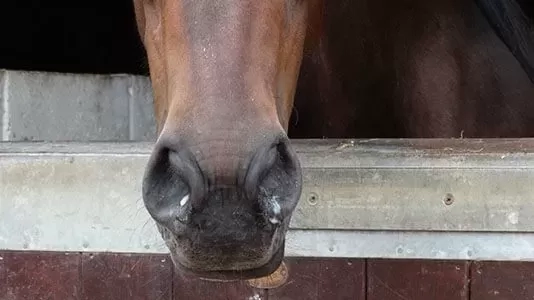
How do horses get strangles?
Strangles is NOT an airborne disease, though a horse can cough or snort infected material several feet. However, the disease can spread rapidly between horses, especially those that have not been exposed to the disease in the past. Strangles bacteria spread most easily through direct contact between horse, but can also be passed on indirectly via surfaces, equipment, water and people’s hands and clothing.
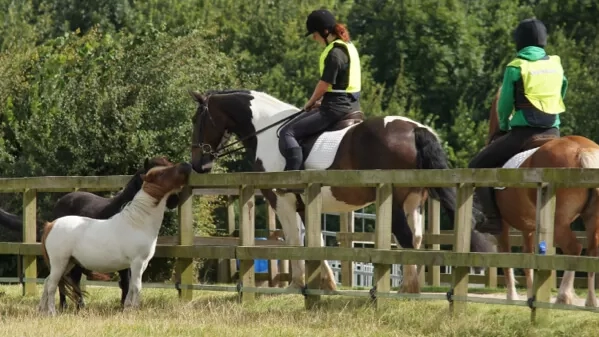
Strangles is especially challenging because some horses become 'strangles carriers' after being infected. This means they still have strangles bacteria hidden in their respiratory system, but are otherwise perfectly healthy. Carriers can shed bacteria intermittently, able to infect other horses without anyone knowing where the disease has come from.
It is vital all horses are checked as they recover from strangles so treatment can be used to help them clear any remaining infection and prevent them becoming carriers.
How does a horse become a strangles carrier?
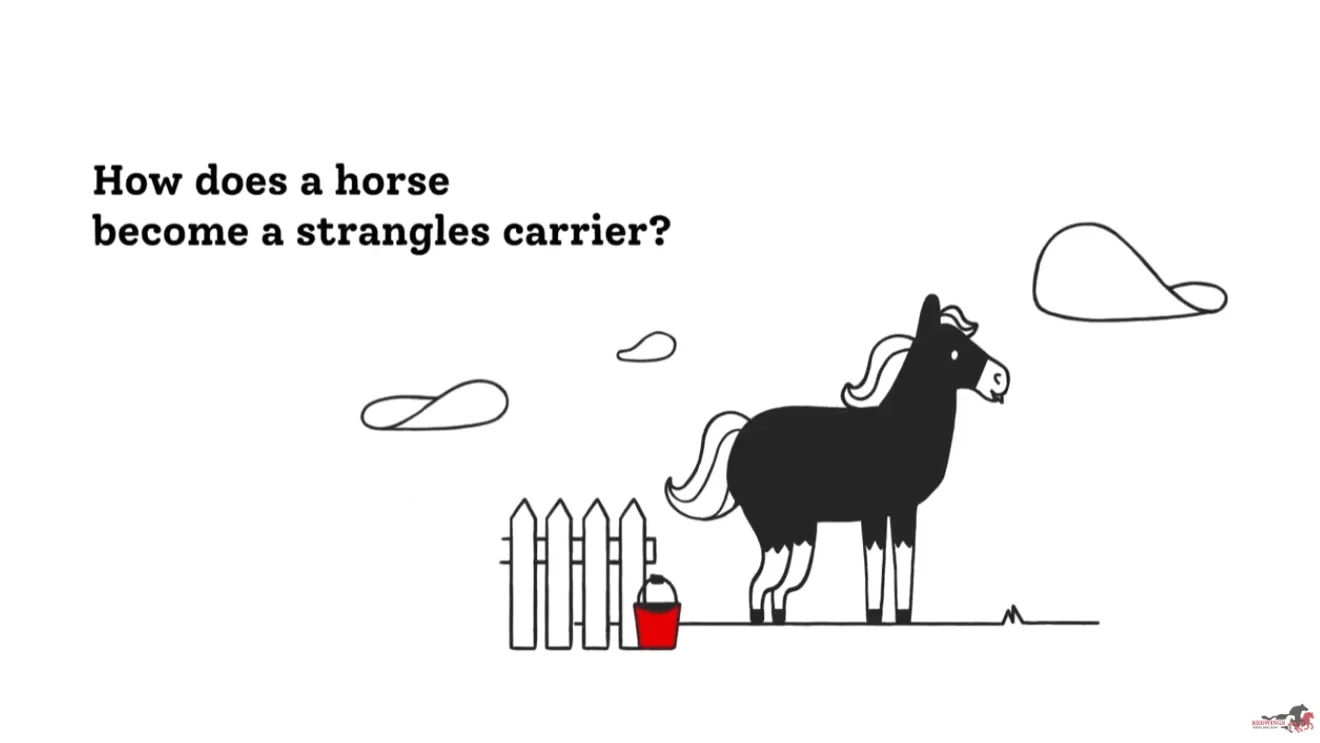
How is strangles diagnosed?
Vets can use different tests to diagnose strangles, depending on the circumstances. They will usually start with a visual examination to look for external signs of the disease and check the horse’s temperature. They can then take samples to be sent for testing to help confirm or rule out strangles infection:
Swabs – can collect samples of discharge from a horse’s nostrils or a burst abscess and are usually the best option for early stages of infection. Specialist swabs can also sample material from the top of a horse’s nasal passages where bacteria are likely to be present in an infected horse. Swabbing is less reliable than endoscopy, and repeat tests are often needed to increase confidence in a negative result.
Guttural pouch endoscopy – is the gold standard test for strangles in horses that have established infection or are in the recovery phase of disease. An endoscope is used to enter both the horse’s guttural pouch, which are air sacs at the top of each nasal passage. Strangles loves guttural pouches as this is where bacteria can survive longer than the illness it causes. Checking and taking samples from the guttural pouches should be routine for any horse that is known or suspected to have had strangles so infection can be found and cleared before it spreads.
Blood samples – will not carry the disease itself but can contain strangles antibodies that the horse’s immune system produces as a response to infection or in a horse that has become a strangles carrier. It can take up to two weeks after first being infected before antibodies are produced by the immune system in sufficient quantity that they can be detected in a blood sample, so this test is less likely to be used for horses in the early stages of disease. Not every horse with strangles antibodies will still have an active infection or be a carrier - and therefore be contagious - so further testing is usually needed to determine if the blood result is caused by live bacteria still being in the horse or not.
What is a guttural pouch endoscopy?
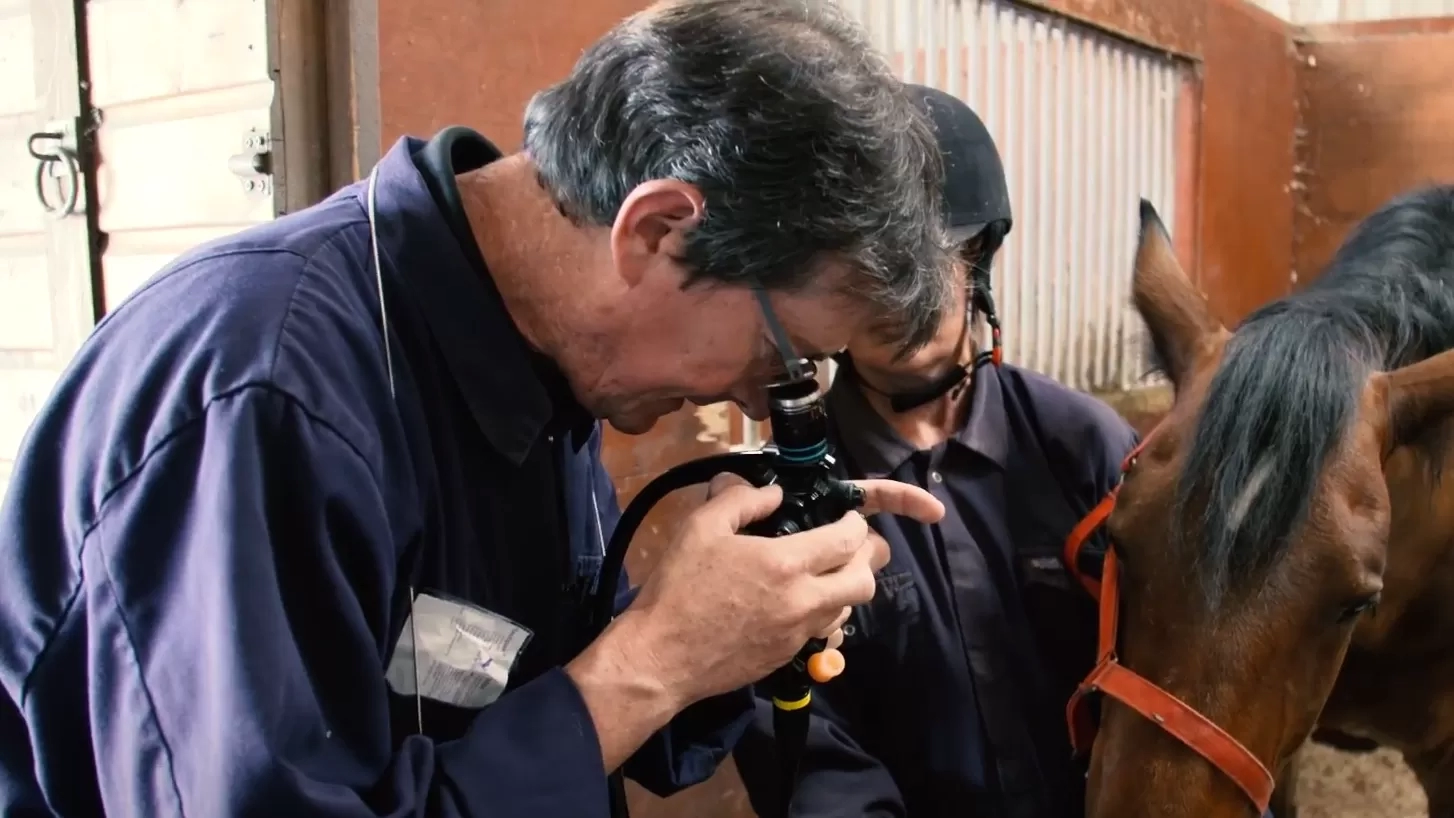
How is strangles treated?
Strangles cannot be ‘cured’ once a horse is infected, but it is vital that patients receive veterinary input early as medication is needed to help relieve the severity of symptoms and assess any issues that require targeted treatment, such as laboured breathing or difficulty eating or drinking.
Good nursing care is equally important to keep the horse quiet and comfortable through their illness and ensure all their welfare needs are being met. Abscesses can be encouraged to burst through application of regular warm poultices and providing soaked feed and forage can make it easier for the horse to eat, as well as increasing water intake.
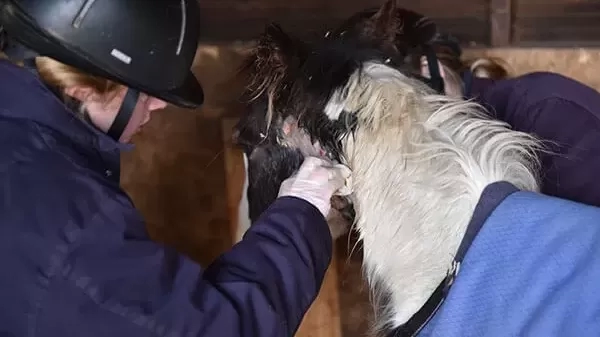
How serious is strangles?
Many horses will be very ill while they are infected but start to feel better after 2-3 weeks. However, strangles is sadly fatal in up to 10% of cases. Complications also develop in up to 20% of cases, such as retaining solidified pus in their guttural pouches, having prolonged infection that lasts for months rather than weeks, or developing ‘bastard strangles’ where infection spreads beyond the horse’s respiratory system and can affect` major organs within the body.
Strangles also has a serious wider impact. Strict quarantine measures are needed to help prevent the spread of disease between horses and yards. Businesses such as riding schools or trekking centres can suffer serious loss of income, and owners cannot take their horses off-site. Here are some useful guidance documents to support isolation and quarantine measures:
- Isolation set up checklist (PDF 510 KB)
- Isolation guidelines (PDF 93 KB)
- Isolation area notice (PDF 62 KB)
Outbreaks are often expensive, exhausting and emotional to deal with, and strangles is a potentially fatal disease for infected horses, so prevention is always better than cure. Here is a small self-care support document that you can use during a strangles outbreak:
Can horses be vaccinated against strangles?
Strangles vaccines are available and can help reduce the chance of a horse becoming infected or reduce the severity of symptoms they experience. Vaccination should not be seen as a replacement for other biosecurity measures, they will work best alongside other steps that also help protect horses from the spread of disease.
Vets are the best source of advice on current vaccination products and which options may be most suitable for individual horses or circumstances. Your vet can also guide you on how make the most of good biosecurity habits that can make a real difference to reducing strangles risk.
How can strangles be prevented?
There are lots of good biosecurity practices, often simple, practical steps, that will help to protect horses from the threat of strangles. Visiting our Strangles Hub today is a great place to start!
More and more horse owners and yard managers are taking steps to reduce their strangles risk. Some of the most effective ways of making good biosecurity a normal part of their horse include:
- Screening new horses to a yard by keeping them in quarantine for 2-3 weeks. This means a newly infected horse who is in the process of becoming ill is less likely to spread disease to others. Horses can also be monitored for signs of ill health such as a high temperature or nasal discharge. Ideally, horses can also be tested so if they are recovering from strangles, or a strangles carrier, they can also be identified and treated, if necessary, before being safely integrated into life on their new yard.
- Travelling safely by cleaning and disinfecting shared vehicles between trips and being cautious about travelling horses from different yards together. If using a professional transporter, ask about their biosecurity procedures and think carefully about journeys with multiple horses from different yards.
- Being infection-aware at events and enjoy getting out and about with your horse with some simple safeguards:
- Avoid direct contact between your horse and other horses or owners from different yards.
- Shared water tanks are especially high risk so it’s always good to take your own water.
- Let your horse nibble a haynet when not being ridden, rather than grazing.
- If you’re staying overnight, check whether onsite stabling is cleaned and disinfected between horses and be prepared to give it a once over if not. - Avoid sharing facilities and equipment with other owners if you don’t know their horse’s strangles status, or disinfect items between uses. Strangles doesn’t usually survive for long in the environment, but lurks for longest in cool, damp conditions. It has been shown to live for over three weeks in water at the bottom of a bucket and in the tread of a boot sole for more than two weeks.
- Prevent horses becoming strangles carriers by getting them checked by a vet as they recover from the disease. Around one in ten horses on average will become a strangles carrier after being infected, meaning they appear to be perfectly healthy but still have bacteria living in their respiratory system. A carrier may shed bacteria intermittently that can infect other horses and trigger fresh outbreaks. Vets can check and treat carriers effectively, enabling them to completely clear the bacteria and go on to lead normal, healthy lives.
Make the most of the Strangles Hub!
Redwings launched the Stamp Out Strangles campaign to help owners, yard managers and equestrian professionals stay a step ahead of the disease. By exploring the Hub you will find out more about:
- How to steer clear of steer clear of strangles at events (PDF 212 KB)
- How to set up and use a quarantine area - a short video with Redwings’ vet, Nic de Brauwere explaining how to set up and use an effective isolation/quarantine area for a horse that has or may have been exposed to strangles.
- Why taking the Stamp Out Strangles pledge will help you do your bit to beat strangles!
Additional clinical information about strangles and how to manage or prevent it:
Meet our strangles expert!
Vet Nic de Brauwere has worked at Redwings since 1991 and is now the charity’s Head of Welfare and Behaviour.
Nic has decades of experience in diagnosing and treating strangles in newly rescued horses coming into Redwings’ care. This includes developing and overseeing the charity’s quarantine and screening processes and ensuring all new arrivals are completely clear of disease before being integrated into the sanctuary’s resident herds.
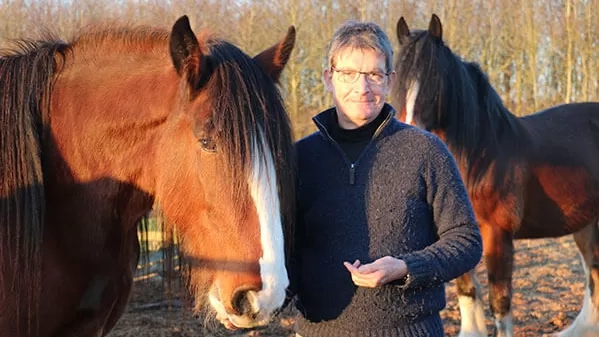
Nic regularly shares his knowledge of strangles and effective biosecurity with practicing vets, yard managers, horse owners and equestrian students to help people better understand the disease and have increased confidence in their ability to prevent or manage an outbreak. He presented at the international Havemeyer Foundation Workshop in 2019 and was one of a panel of experts who developed the current best practice guidelines on strangles diagnosis and management, published in 2021 – UK Vet Equine 2021_Strangles Roundtable (PDF 4.5 MB).
Nic de Brauwere MRCVS
Head of Welfare and Behaviour
Redwings Horse Sanctuary
